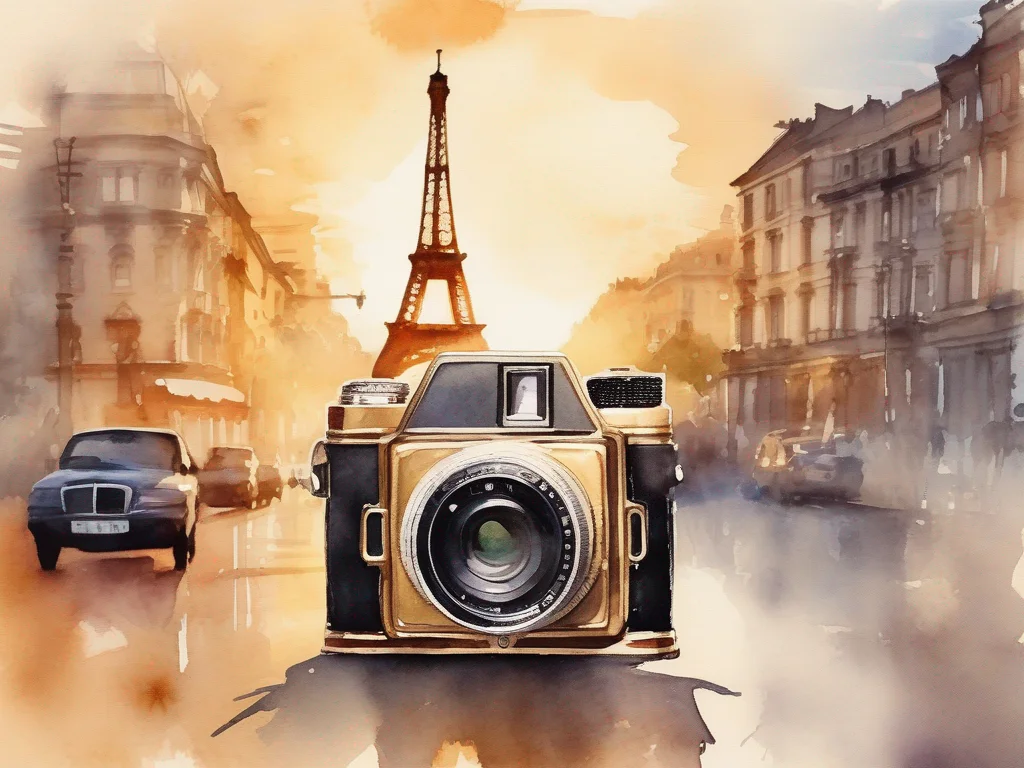Travel photography has evolved dramatically in 2025, with smartphone cameras rivaling professional equipment and AI-powered editing tools making stunning photos accessible to everyone. Whether you're planning your first international adventure or looking to elevate your Instagram feed, these 10 essential tips will transform your travel photography from snapshots to memories that truly capture the magic of your journeys.
1. Choose the Right Equipment for Your Travel Style
In 2025, the gap between smartphone and dedicated camera quality has narrowed significantly. The key is choosing equipment that matches your travel style, comfort level, and goals rather than simply buying the most expensive gear available.
Smartphone Photography (80% of Travel Photos)
Modern smartphones like the iPhone 15 Pro, Google Pixel 8 Pro, and Samsung Galaxy S24 Ultra feature multiple lenses, computational photography, and built-in editing capabilities that rival professional cameras.
- • Pros: Always in your pocket, instant sharing, excellent low-light performance, AI-powered features
- • Best for: Social media, casual documentation, street photography, quick captures
- • Essential accessories: Portable tripod, lens attachments, external battery pack
Mirrorless Cameras (The 2025 Standard)
Mirrorless cameras have become the gold standard for travel photography, offering DSLR quality in significantly smaller packages. Top recommendations for 2025 include:
- • Fujifilm X-T5: Best overall travel camera with 40MP APS-C sensor
- • Sony a6700: Compact with AI autofocus and excellent video capabilities
- • Canon EOS R10: Perfect beginner camera with intuitive controls
- • Advantages: Interchangeable lenses, better low light, manual controls, longer battery life
Essential Travel Photography Kit
Must-Have Accessories:
- • Lightweight tripod (carbon fiber recommended)
- • Extra batteries and portable charger
- • Lens cleaning kit
- • Waterproof camera bag
- • Memory cards (at least 64GB each)
Lens Recommendations:
- • 18-55mm kit lens (versatile for beginners)
- • 35mm prime lens (street photography)
- • 85mm portrait lens (people and details)
- • Wide-angle lens (landscapes and architecture)
2. Master Essential Composition Rules
Great composition transforms ordinary travel moments into captivating photographs. While rules are meant to be broken, understanding these fundamentals provides a solid foundation for creating visually compelling images.
Rule of Thirds
Instead of centering your subject, place important elements along the intersecting lines of an imaginary 3x3 grid. This creates more dynamic and balanced compositions that naturally draw the viewer's eye.
Pro tip: Enable grid lines in your camera or phone settings to practice this technique.
Leading Lines
Use natural or architectural elements like roads, rivers, staircases, or shorelines to guide the viewer's eye through your photograph. Leading lines create depth and draw attention to your main subject.
Examples: Ancient stone pathways, railway tracks, architectural details, natural coastlines.
Foreground, Middle Ground, Background
Create depth by including elements at different distances from your camera. This technique makes flat images feel three-dimensional and more engaging.
Practice: Include flowers in the foreground, a building in the middle ground, and mountains in the background.
Framing
Use architectural elements, natural features, or objects to frame your subject. Windows, doorways, branches, and caves create natural frames that focus attention and add context.
3. Harness the Magic of Golden Hour
Golden hour—the period roughly one hour after sunrise and one hour before sunset—provides the most flattering natural light for travel photography. The warm, soft light eliminates harsh shadows and creates a magical atmosphere that transforms ordinary scenes into extraordinary photographs.
Why Golden Hour Works
When the sun hangs low in the sky, light travels through more atmosphere, scattering blue wavelengths and allowing longer wavelengths (reds, oranges, yellows) to dominate. This creates naturally warm, flattering light that makes everything look better.
- • Portraits: Eliminates harsh shadows and creates a natural glow
- • Landscapes: Adds warmth and drama to natural scenes
- • Architecture: Creates beautiful contrast and dimensional lighting
- • Street photography: Provides atmospheric, cinematic quality
Camera Settings for Golden Hour
- • Aperture: f/2.8 or lower for portraits, f/8-f/11 for landscapes
- • ISO: Start at 200-400, increase to 800-1200 as light fades
- • White Balance: Set to "Cloudy" (6000K-6500K) to enhance warm tones
- • Shutter Speed: Keep faster than 1/(focal length) to avoid camera shake
Planning Your Golden Hour Shots
- • Use apps like PhotoPills or Sun Surveyor for precise timing
- • Arrive 30 minutes early to scout locations and set up
- • Have backup compositions ready—golden hour is brief!
- • Consider both sunrise and sunset for different moods
Advanced Golden Hour Techniques
- • Silhouettes: Underexpose by 1-2 stops to create dramatic silhouettes
- • Sunbursts: Use f/16-f/22 and partially hide the sun behind objects
- • Reflections: Look for water, glass, or wet surfaces to double the magic
- • Backlighting: Position subjects between camera and sun for rim lighting
4. Understand Camera Settings and Modes
While automatic modes work well in many situations, understanding manual controls gives you creative freedom and ensures consistent results across different lighting conditions and scenarios.
The Exposure Triangle
Aperture, shutter speed, and ISO work together to control exposure. Understanding their relationship is fundamental to taking control of your photography.
Aperture (f-stop)
Controls depth of field
- • f/1.4-f/2.8: Shallow focus, blurred backgrounds
- • f/8-f/11: Sharp throughout the frame
- • f/16-f/22: Maximum sharpness, small details
Shutter Speed
Controls motion and camera shake
- • 1/500s+: Freeze fast action
- • 1/60s-1/250s: General photography
- • 1/30s-: Motion blur, need tripod
ISO
Controls sensor sensitivity
- • 100-400: Bright conditions, best quality
- • 800-1600: Low light, acceptable grain
- • 3200+: Very dark, noticeable grain
Essential Camera Modes for Travel
Aperture Priority (A/Av Mode)
Perfect for controlling depth of field. Set your desired aperture, and the camera chooses shutter speed. Ideal for portraits (wide aperture) and landscapes (narrow aperture).
Shutter Priority (S/Tv Mode)
Control motion blur and camera shake. Set shutter speed, camera chooses aperture. Great for action shots, waterfalls, and handheld photography.
Manual Mode
Full control over all settings. Essential for consistent lighting conditions, long exposures, and creative techniques like light painting.
5. Maximize Your Smartphone's Potential
With 80% of travelers using smartphones as their primary camera, mastering mobile photography is essential. Modern smartphones offer professional-level features when you know how to use them effectively.
2025 Smartphone Photography Trends
- • Computational Photography: AI-powered processing rivals professional cameras
- • Multiple Lenses: Wide, ultra-wide, telephoto, and macro options in one device
- • Pro Modes: Manual controls for ISO, shutter speed, and focus
- • Night Mode: Exceptional low-light performance without flash
- • Portrait Mode: DSLR-quality background blur using AI
Essential Smartphone Settings
- • Enable grid lines for rule of thirds
- • Shoot in RAW format when available
- • Use highest resolution setting
- • Turn off digital zoom (move closer instead)
- • Enable HDR for high-contrast scenes
- • Use timer or volume buttons to reduce shake
Must-Have Smartphone Accessories
- • Tripod: Joby GripTight or similar compact option
- • Lens Attachments: Moment lenses for wide-angle and macro
- • External Battery: Keep shooting all day
- • Waterproof Case: Protection for beach and adventure travel
- • Gimbal: DJI OM series for smooth video
Advanced Smartphone Techniques
Focus and Exposure Control:
- • Tap to focus on your main subject
- • Swipe up/down to adjust exposure
- • Use AE/AF lock for consistent exposure
- • Separate focus and exposure points when needed
Creative Features:
- • Live Photos for choosing perfect moment
- • Burst mode for action and groups
- • Panorama for wide landscapes
- • Time-lapse for clouds and crowds
6. Focus on Storytelling Over Technical Perfection
The most memorable travel photographs tell stories and evoke emotions. While technical excellence is important, a slightly imperfect image with strong emotional content will always outperform a technically perfect but emotionally empty photograph.
Elements of Visual Storytelling
- Emotion: Capture genuine expressions, interactions, and moments of joy, surprise, or contemplation that viewers can connect with.
- Context: Include environmental elements that show where you are and what's happening around your main subject.
- Human Element: Even landscape photos benefit from including people for scale and relatability.
- Details: Close-up shots of food, textures, and cultural artifacts add depth to your travel story.
Photo Series Approach
Instead of isolated shots, think in terms of photo series that work together:
- • Wide establishing shot
- • Medium shots showing interaction
- • Close-ups revealing details
- • Behind-the-scenes moments
- • Environmental context
Capture Authentic Moments
- • Observe before shooting
- • Use longer lenses to avoid disrupting scenes
- • Capture candid expressions and interactions
- • Include environmental portraits
- • Document the journey, not just destinations
7. Capture Authentic Local Perspectives
The most compelling travel photography goes beyond tourist attractions to reveal the authentic character of a place and its people. This requires patience, respect, and genuine curiosity about local culture and daily life.
Ethical Photography Practices
- • Ask Permission: Always seek consent before photographing people, especially in close-up
- • Learn Basic Phrases: "May I take your photo?" in the local language shows respect
- • Share Your Photos: Show subjects their images and offer to send copies
- • Understand Context: Research cultural sensitivities and sacred spaces
- • Give Back: Consider how your photography can benefit local communities
Finding Authentic Moments
- • Visit local markets early in the morning
- • Explore residential neighborhoods
- • Attend cultural festivals and celebrations
- • Document traditional crafts and occupations
- • Capture everyday life and routines
- • Seek out local transportation and gathering places
Building Connections
- • Spend time without your camera first
- • Learn about local customs and traditions
- • Use local guides and cultural interpreters
- • Support local businesses and artisans
- • Return to the same places multiple times
- • Share meals and experiences with locals
8. Embrace Weather and Challenging Conditions
Perfect weather makes for pleasant travel but often results in ordinary photographs. Dramatic weather conditions—storms, fog, snow, rain—create mood, atmosphere, and unique lighting that transform familiar locations into extraordinary images.
Weather as Creative Opportunity
Rain and Storms
- • Dramatic clouds and lighting
- • Reflections in wet surfaces
- • Rainbow opportunities after storms
- • Moody, atmospheric images
- • People seeking shelter (candid moments)
Fog and Mist
- • Mysterious, ethereal atmosphere
- • Simplified compositions
- • Enhanced depth and layering
- • Soft, diffused lighting
- • Hidden and revealed landscapes
Protecting Your Equipment
Essential Protection:
- • Waterproof camera bag or housing
- • Lens hoods to prevent water spots
- • Microfiber cloths for cleaning
- • Silica gel packets for moisture control
- • Camera rain covers or plastic bags
Technique Adjustments:
- • Increase ISO for faster shutter speeds
- • Use image stabilization when available
- • Bracket exposures for difficult lighting
- • Keep equipment warm in cold conditions
- • Allow gradual temperature acclimatization
9. Develop a Consistent Editing Workflow
Post-processing is where good travel photos become great ones. In 2025, mobile editing has reached professional levels, allowing you to edit and share stunning images directly from your phone while still traveling.
Essential Editing Apps for 2025
Professional Options:
- • Adobe Lightroom Mobile: Professional RAW editing, cloud sync ($9.99/month)
- • VSCO: Film-inspired presets, social features ($19.99/year)
- • Snapseed: Powerful free editing with selective adjustments
- • RNI Films: Authentic film emulation and grain
Quick Editing:
- • Instagram: Built-in filters and basic adjustments
- • Canva: Templates and social media optimization
- • Unfold: Story templates and layouts
- • Retouch: Object removal and healing
Basic Editing Workflow
- 1. Import and Organize: Sort photos by location or day
- 2. Basic Corrections: Straighten horizons, crop for composition
- 3. Exposure Adjustments: Highlights, shadows, whites, blacks
- 4. Color Grading: Adjust vibrance, saturation, and color balance
- 5. Local Adjustments: Enhance specific areas with masks
- 6. Final Touches: Sharpening, noise reduction, vignetting
- 7. Export: Optimize for intended use (social media, print, web)
Developing Your Style
Consistency in editing helps create a recognizable style that ties your travel photography together:
- • Create Presets: Save your favorite settings for quick application
- • Color Palette: Develop a consistent approach to color grading
- • Contrast and Tone: Maintain similar mood across images
- • Study Others: Analyze photographers whose style you admire
- • Evolve Gradually: Refine your style over time rather than dramatic changes
10. Plan Ahead but Stay Spontaneous
The best travel photography combines careful planning with openness to unexpected moments. Research helps you maximize opportunities, while spontaneity ensures you capture authentic, unscripted moments that truly represent your travel experience.
Pre-Trip Planning
- • Research sunrise/sunset times and directions
- • Study weather patterns and seasonal conditions
- • Identify local festivals and cultural events
- • Scout locations using Google Earth and Instagram
- • Create shot lists for must-have images
- • Check photography restrictions and permits
- • Plan equipment based on activities
Staying Flexible
- • Always carry your camera (or smartphone)
- • Leave time for unexpected discoveries
- • Talk to locals about hidden gems
- • Revisit locations at different times
- • Be ready for changing weather conditions
- • Document the journey, not just destinations
- • Embrace happy accidents and mistakes
Essential Photography Apps for Planning
Light and Weather:
- • PhotoPills (sun/moon tracking)
- • Sun Surveyor (light direction)
- • Weather Underground (detailed forecasts)
- • Clear Outside (cloud cover predictions)
Location Scouting:
- • Google Earth (terrain and perspectives)
- • Instagram location tags
- • 500px (professional photography examples)
- • Flickr map view
Organization:
- • Google Photos (cloud backup)
- • Dropbox (file sharing)
- • Evernote (location notes)
- • Maps.me (offline navigation)
Your Photography Journey Starts Now
Travel photography is a journey of continuous learning and creative growth. These 10 essential tips provide a solid foundation, but the real magic happens when you combine technical knowledge with your unique perspective and experiences. Remember that the best camera is the one you have with you, and the most important element in any photograph is the story it tells.
Start with one or two techniques that resonate with you, practice them until they become second nature, then gradually expand your skills. Whether you're capturing the bustling streets of Bangkok, the serene temples of Kyoto, or the dramatic landscapes of Patagonia, these fundamentals will help you create images that not only document your travels but inspire others to explore the world with fresh eyes and an open heart.





